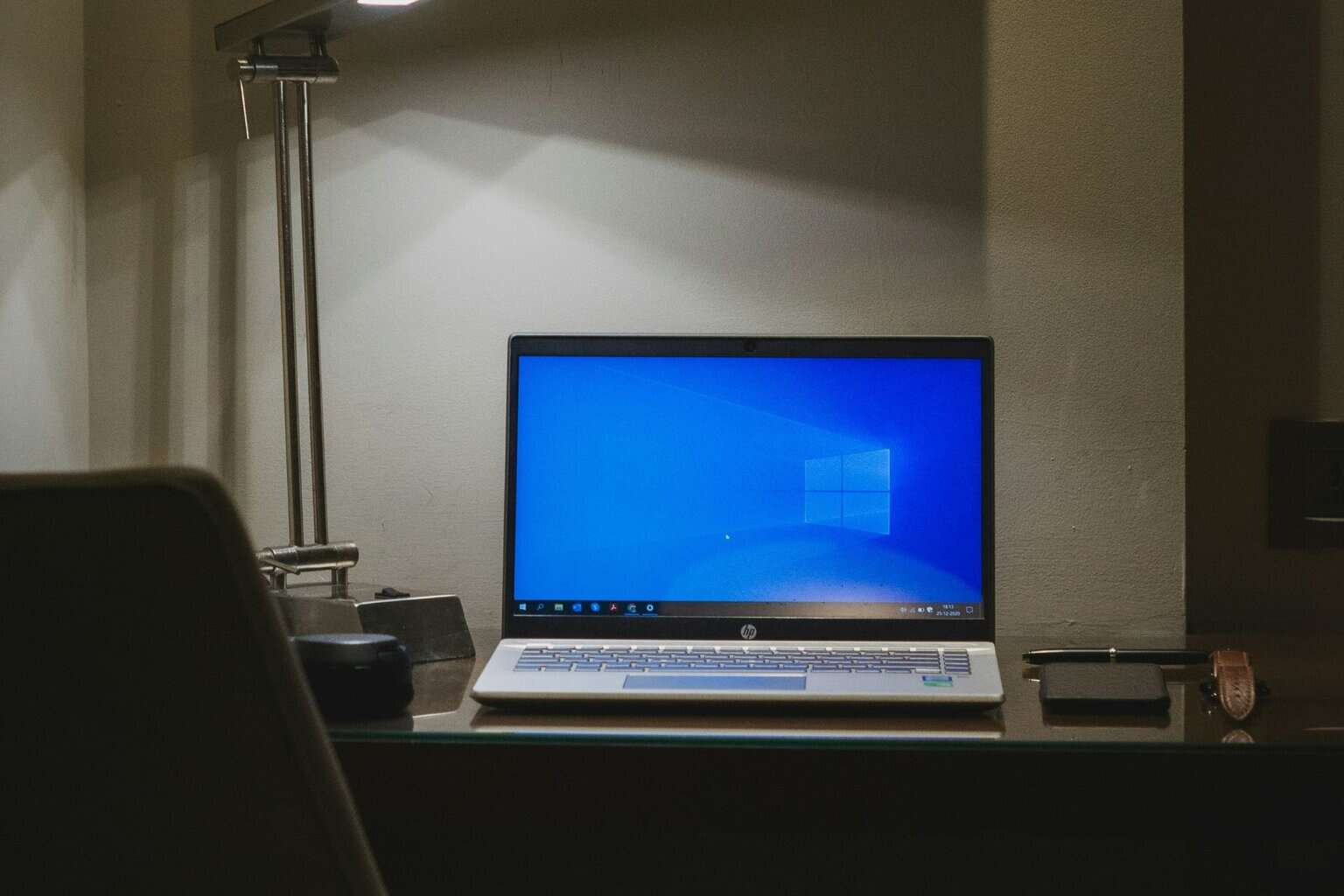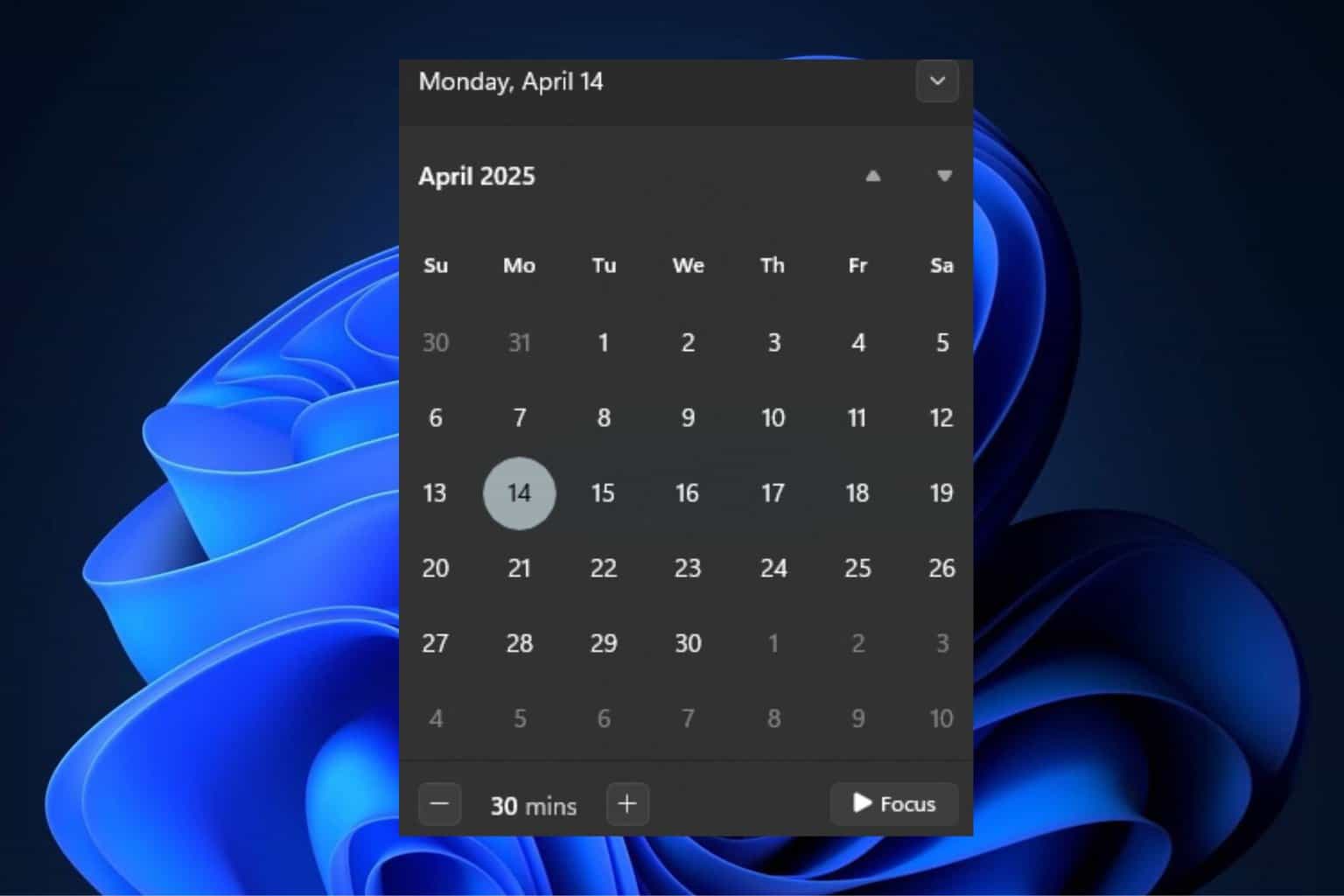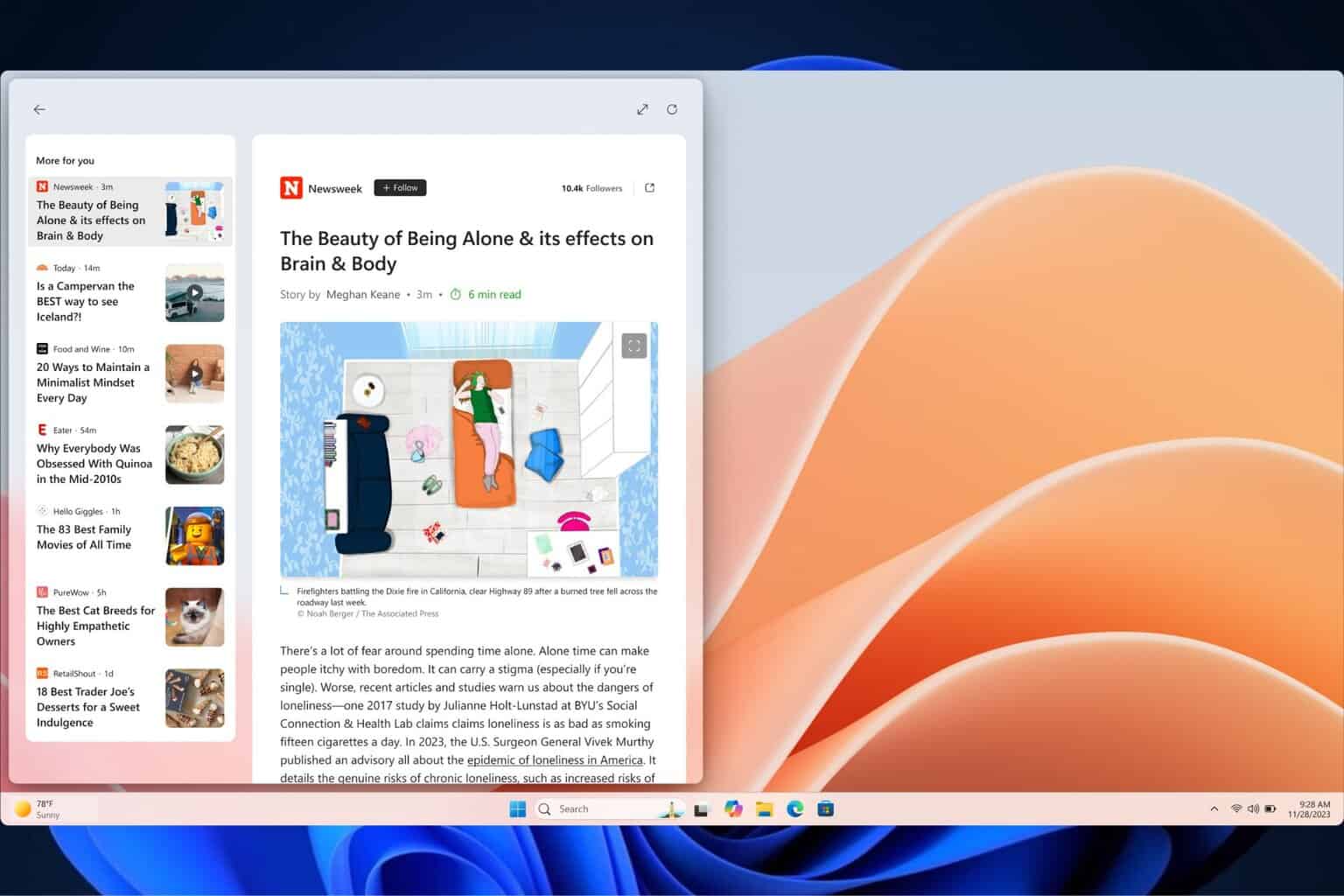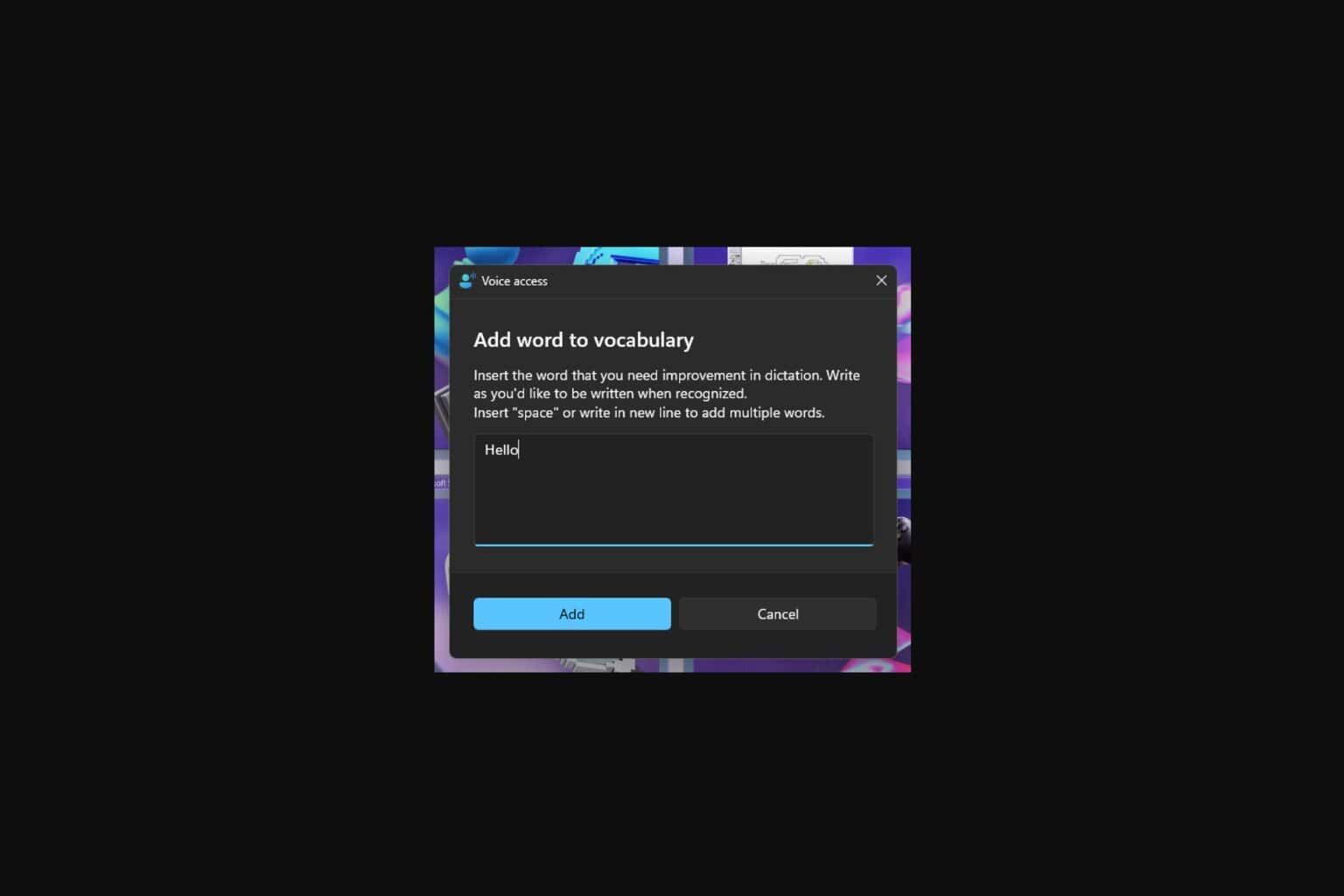ERROR_SYSTEM_IMAGE_BAD_SIGNATURE 637 (0x27D) [BSoD Fix]
First, restart your computer in safe mode
7 min. read
Published on
Read our disclosure page to find out how can you help Windows Report sustain the editorial team. Read more

The ERROR_SYSTEM_IMAGE_BAD_SIGNATURE with error code 637 (0x27D and description {Fatal System Error} The system image %s is not properly signed. The file has been replaced with the signed file. The system has been shut down, indicates that a driver or system file is not properly signed. You might see this error due to corrupted system files or corrupted drivers.
How can I get rid of ERROR_SYSTEM_IMAGE_BAD_SIGNATURE?
Before moving to the advanced troubleshooting steps, make sure you perform these:
- Restart your computer and ensure there are no pending Windows Updates
- Run a full system malware scan using Windows Defender or a reliable third-party antivirus tool
- Press Windows + X and select Event Viewer. Then, go to Windows Logs>System and check for warnings or errors related to this BSoD error.
 NOTE
NOTE
1. Run SFC & DISM scans
- Once your PC is in safe mode, press the Windows key, type cmd in the search bar, and select Run as administrator from the list of options to launch Command Prompt with elevated rights.
- To restore or repair the corrupted system files, type the following command and hit Enter:
sfc /scannow - Wait for the scan to complete, and if you see the ERROR_SYSTEM_IMAGE_BAD_SIGNATURE again, then copy & paste the following command to repair the system image files via Windows Update and press Enter:
Dism /Online /Cleanup-Image /RestoreHealth - Let the scan complete successfully, then restart your computer to let the changes take effect.
2. Update or reinstall drivers
- In safe mode, press Windows + R to open the Run window.
- Type devmgmt.msc and click OK to open the Device Manager app.
- You will see the system components. Click on each category to expand it, and look for a driver with a yellow triangle and an exclamation mark.
- Right-click the driver and select Update driver from the context menu.
- Select Search automatically for drivers. You can repeat steps 4 and 5 if there are multiple problematic drivers.
Windows will try to find the best version of Windows for your device. If it fails, you can head to the device’s manufacturer’s website and look for the latest version of the driver, then install it manually like an application. On the other hand, you can opt to install a third-party driver updater tool to ensure all the device drivers are always up to date.
If updating the driver doesn’t help, follow these steps to reinstall drivers:
- Launch Device Manager, then locate and right-click the problematic driver and choose Uninstall device.
- Click Uninstall to confirm.
- To reinstall, restart your PC or go to Action, then select Scan for hardware changes.
3. Run the CHKDSK scan
- In safe mode, press the Windows key, type cmd in the search bar, and select Run as administrator from the list of options to launch Command Prompt with elevated rights.
- To run the chkdsk utility on the desired drive to scan and repair the bad sectors, type the following command after replacing C with the affected drive letter and hit Enter:
chkdsk C: /f /r - If the disk is in use, you will be prompted to schedule a PC restart. Type Y and hit Enter.
- Now restart your computer and let the scan initiate.
The process may take some time, especially if the disk has many errors or is large. Once it is done, you will get a summary of the actions taken, or you can check them in Event Viewer.
4. Disable Driver Signature Enforcement
- In safe mode, press Windows + I to open Settings.
- Go to System, then select Recovery.
- Locate Advanced Startup, and click Restart now.
- Your PC will restart and take you to the Choose an option screen, select Troubleshoot.
- Choose Advanced options.
- Select Startup Settings.
- Click Restart.
- Your computer will restart, so press F7 or 7 to select Disable driver signature enforcement.
Once the system boots up, check if the ERROR_SYSTEM_IMAGE_BAD_SIGNATURE appears again. If it does, reverse engineer these steps to enable the setting.
5. Perform a System Restore
- In safe mode, press Windows + R to open the Run window.
- Type rstui and click OK to open the System Restore window.
- Select Choose a different restore point and click Next.
- A list of available restore points will appear, select the one before you encounter ERROR_SYSTEM_IMAGE_BAD_SIGNATURE, then click Next to proceed.
- Click Finish.
Windows will restart and restore your system settings to the chosen point. However, if it fails, and you get System Restore did not Complete Successfully message after restart, the conflicting drivers, or corrupted system files are to blame.
6. Reinstall Windows (last resort)
Before you proceed with these steps to reinstall Windows, make sure you do these things:
- Back up all your important data, including videos, photos, documents, and other files, to an external drive
- Keep a USB flash drive with 8 GB of free space handy
- Note down your Microsoft account credentials
- Make a list of all installed apps, their licenses, and credentials
- If using a laptop, make sure you connect it to a charger
Create an installation media
- Visit the Windows 11 download website on another PC or affected PC if it is in working condition.
- Go to the Create Windows 11 Installation media section and click Download now.
- The mediacreation.exe is downloaded; double-click to run it and click Yes on the UAC prompt to grant permission.
- On the Windows 11 Setup wizard, click Accept.
- Choose the Language, Edition, and Architecture on the following page, and click Next.
- Insert the USB drive. On the Choose which media to use screen, select the USB flash device option and click Next.
- The flash drive letter should appear on the Select a USB flash drive page. If it doesn’t, click the Refresh drive list option to ensure your flash drive is listed, then click Next.
- Wait for the process to complete, click Finish, then remove the USB device from the PC safely.
Reinstall the OS
- Plug the flash drive into the affected computer, then restart your computer.
- The device will automatically boot to the USB drive; however, if it doesn’t, you have to change the boot order from the boot menu.
- You will get the Install Windows page once the PC boots to the USB drive.
- Select language, time, and keyboard preferences, and click Next.
- Click Install Windows to start the reinstallation.
During the process, your PC may restart several times. Once it is complete, Windows will boot and take you to the login screen. You can then log in to your account, check for Windows Updates, and configure your device settings according to your preferences.
Reinstalling Windows is the last resort for fixing any BSoD errors like ERROR_INTERMIXED_KERNEL_EA_OPERATION 324 (0x144) and ERROR_BAD_STACK, so first try all the other methods before trying this.
In conclusion, to fix the ERROR_SYSTEM_IMAGE_BAD_SIGNATURE, you can run SFC & DISM scans, update or reinstall drivers, repair the bad sectors on disk via CHKDSK utility, disable Driver Signature Enforcement, restore your PC to an older version. If nothing works, you need to install a fresh copy of Windows.
Once you have resolved the issue, don’t forget to reverse-engineer the steps before Method 1 to restart your PC in normal mode.
If you have any questions or suggestions about the BSoD error, feel free to mention them in the comments section below.































User forum
0 messages